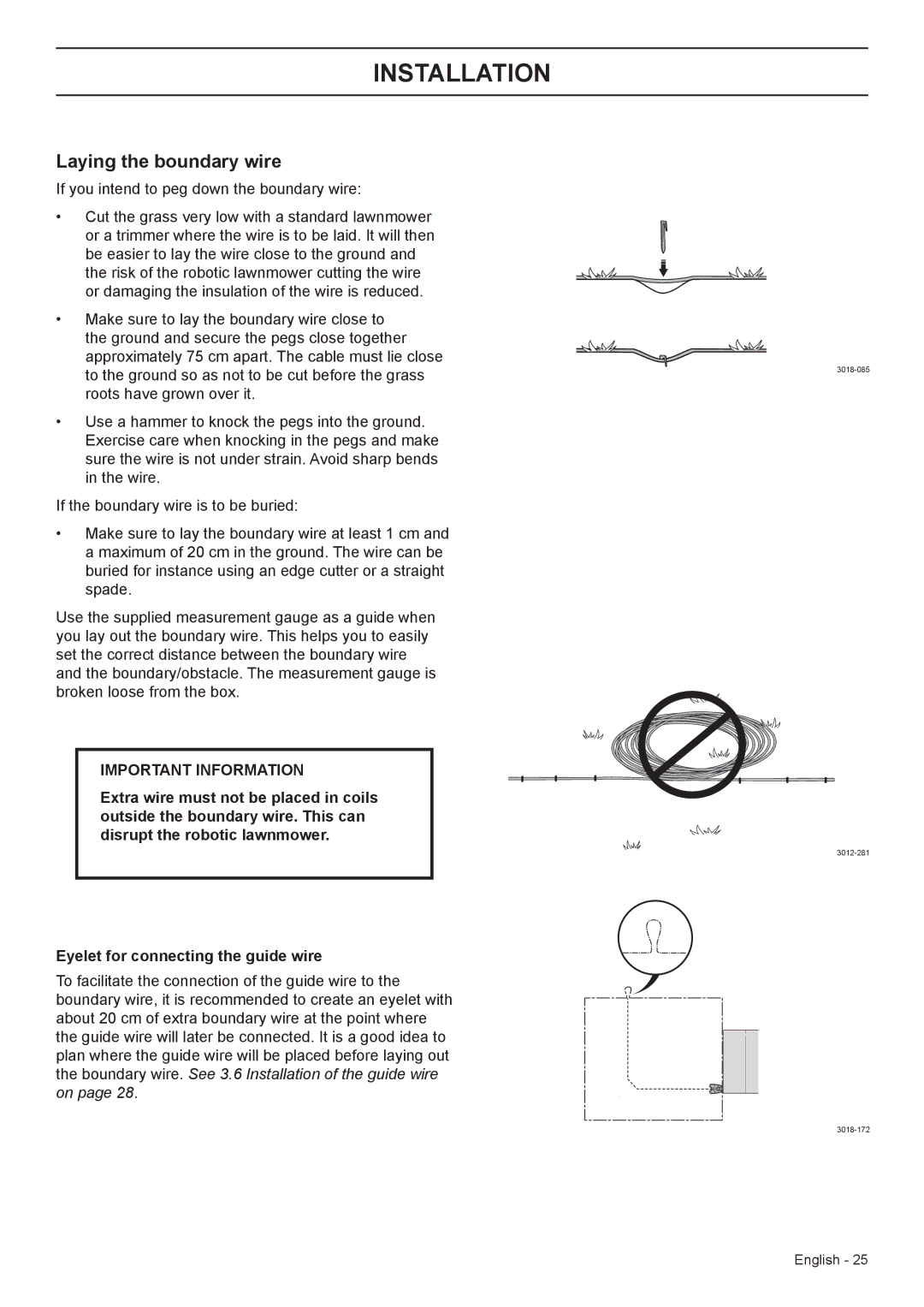
INSTALLATION
Laying the boundary wire
If you intend to peg down the boundary wire:
•Cut the grass very low with a standard lawnmower or a trimmer where the wire is to be laid. It will then be easier to lay the wire close to the ground and the risk of the robotic lawnmower cutting the wire or damaging the insulation of the wire is reduced.
•Make sure to lay the boundary wire close to the ground and secure the pegs close together approximately 75 cm apart. The cable must lie close to the ground so as not to be cut before the grass roots have grown over it.
•Use a hammer to knock the pegs into the ground. Exercise care when knocking in the pegs and make sure the wire is not under strain. Avoid sharp bends in the wire.
If the boundary wire is to be buried:
•Make sure to lay the boundary wire at least 1 cm and a maximum of 20 cm in the ground. The wire can be buried for instance using an edge cutter or a straight spade.
Use the supplied measurement gauge as a guide when you lay out the boundary wire. This helps you to easily set the correct distance between the boundary wire and the boundary/obstacle. The measurement gauge is broken loose from the box.
IMPORTANT INFORMATION
Extra wire must not be placed in coils outside the boundary wire. This can disrupt the robotic lawnmower.
Eyelet for connecting the guide wire
To facilitate the connection of the guide wire to the boundary wire, it is recommended to create an eyelet with about 20 cm of extra boundary wire at the point where the guide wire will later be connected. It is a good idea to plan where the guide wire will be placed before laying out the boundary wire. See 3.6 Installation of the guide wire on page 28.
English - 25
